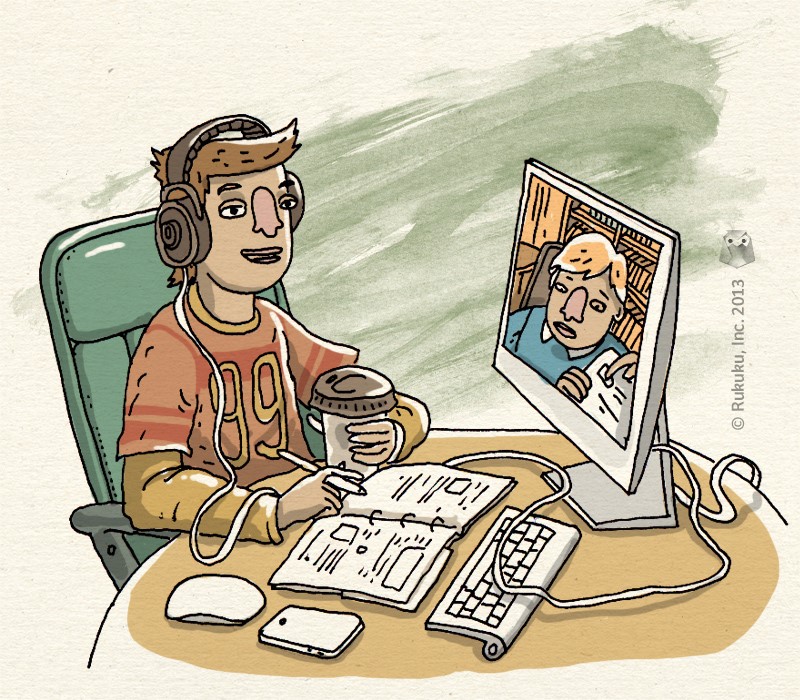When venturing into the online classroom, many teachers worry that they will lose the personal interaction present in the traditional classroom setting. There, students and teachers are face-to-face, which creates that old-school type of interaction called conversation. In many popular online learning management systems, that interaction changes to a written format, which allows students to continue making comments 24 hours a day. This flexibility is one the biggest selling points for online education.
At the same time, the spontaneity of live class discussion can be lost. Students often learn more from those discussions with teachers and classmates than from their homework, reading, and problem sets. The slower format of class comment, and even live chat, which operates in real time through written formats, can dampen that discussion.
At Rukuku, we’ve tried to maintain all of these elements by offering a live video chat feature, as well as written chat and comment sections. We also include a virtual white board, which allows both teachers and students to write via iPads or on their computer screens. For example, a teacher could write a math problem on the white board and let the student solve it. Through all these features, online channels can actually strengthen interaction.
Strengthening that interaction takes more than technological tools, however. It takes time. This is one of the biggest surprises for many first-time online teachers. Because class discussion can continue 24 hours a day, teachers must commit to checking in on their classes and commenting often. For better or worse, most online students have come to expect prompt responses.
Toward that end, many online class services require teachers to respond to student comments within a certain time frame, usually 48 hours. Teachers that don’t have those requirements specifically should impose them on themselves. We all have emails from friends and family sitting in our inboxes, waiting for responses. Those responses usually don’t happen if they don’t happen quickly. If you are planning an online class, set a deadline at 12, 24, or at most 48 hours to respond to your students’ comments.
AND, in addition to that, schedule a video chat, just as you would in a traditional course. You may be able to include your lecture in recorded video form as preparation material, together with assigned reading. But make sure you schedule some time each week to lead a video chat. It will add spontaneity and virtual face time, while bringing your students closer to you and to each other.


